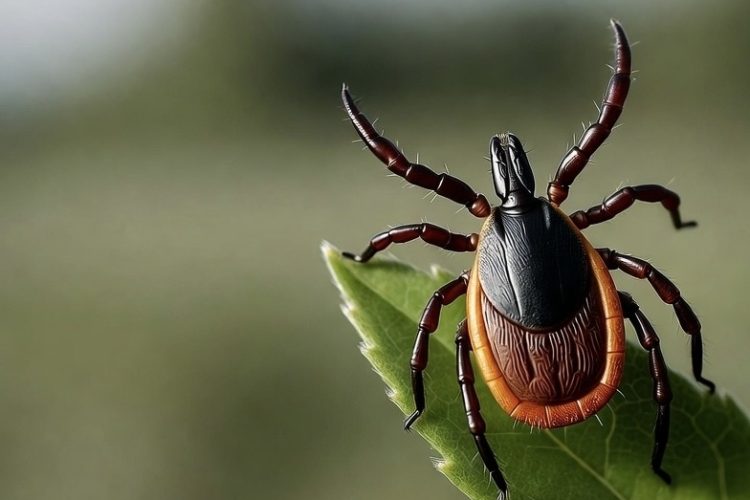In the 1970s-1980s, researchers at the Plum Island Animal Disease Center conducted tick experiments to study Lyme disease. Speculation arose regarding a connection between the experiments and the subsequent epidemic, but there is no conclusive evidence supporting this claim. The research aimed to understand the disease rather than intentionally cause it.
AD SAMSARA HERBS TICK IMMUNE SUPPORT | AMAZON
Long Version
The US Ticks Lyme Disease Experiment in the 1970s-1980s: Researchers at the Plum Island Animal Disease Center and the Epidemic
Introduction
In the 1970s and 1980s, researchers at the Plum Island Animal Disease Center conducted experiments involving ticks and their potential role in the spread of Lyme disease. These experiments have garnered attention and speculation over the years, with some suggesting a connection between the research and the subsequent Lyme disease epidemic. In this article, we will delve into the details of the Plum Island experiments, their findings, and their potential implications for the spread of Lyme disease.
- The Plum Island Animal Disease Center:
1.1 Overview:
The Plum Island Animal Disease Center, located off the coast of Long Island, New York, was established in 1954 as a research facility focusing on foreign animal diseases. Its primary objective was to study and develop countermeasures against diseases that could impact livestock and potentially be used as biological weapons.
1.2 Research Focus:
During the 1970s and 1980s, the researchers at the Plum Island Animal Disease Center became interested in ticks and the diseases they carried. Lyme disease, caused by the bacterium Borrelia burgdorferi, was gaining recognition as a public health concern. Researchers aimed to understand the ecology and transmission of the disease, including the role of ticks as vectors.
- The Ticks and Lyme Disease Experiment:
2.1 Tick Research Program:
The Plum Island researchers initiated a tick research program, focusing on identifying the tick species present in the area, understanding their behavior, and studying the diseases they carried. The program involved collecting ticks from various sources, including wild animals and birds, and establishing colonies of the ticks for experimental purposes.
2.2 The Lyme Disease Connection:
The Plum Island researchers identified ticks infected with Borrelia burgdorferi, the bacteria responsible for Lyme disease. They conducted experiments to study the transmission of the bacteria from infected ticks to other organisms, including animals and humans. These experiments aimed to unravel the mechanisms by which Lyme disease spread and to develop strategies for disease prevention and control.
- Controversies and Speculations:
3.1 Release of Infected Ticks:
One controversy surrounding the Plum Island experiments is the speculation that infected ticks were accidentally or intentionally released into the surrounding environment. These claims have been the subject of much debate and investigation, with no conclusive evidence supporting the release theory.
3.2 Possible Connection to the Lyme Disease Epidemic:
Some individuals have suggested a link between the Plum Island experiments and the subsequent Lyme disease epidemic. However, it is important to note that the Lyme disease-causing bacterium, Borrelia burgdorferi, was already present in nature before the Plum Island research began. The experiments aimed to understand the disease rather than create it.
- Conclusion:
The Plum Island Animal Disease Center’s tick research program during the 1970s and 1980s sought to investigate the ecology and transmission of Lyme disease. While controversies and speculations surround the experiments conducted at Plum Island, it is crucial to approach these claims with skepticism. The current scientific consensus holds that Lyme disease existed in the environment prior to the research and that the experiments aimed to enhance our understanding of the disease rather than intentionally cause an epidemic.
It is essential to continue supporting scientific research to further comprehend and combat Lyme disease, as it remains a significant public health concern in many parts of the United States and other countries.
Words Worth Noting
US ticks, Lyme disease, experiment, 70s, 80s, Plum Island Animal Disease Center, researchers, epidemic, tick research program, Borrelia burgdorferi, transmission, prevention, controversies, speculations, infected ticks, release, connection, scientific consensus, ecology, public health, understanding, investigation, nature, skepticism, scientific research, combat, United States, speculation, diseases.
Hashtags For Social Media
#USTicks #LymeDisease #Experiment #70s #80s #PlumIslandAnimalDiseaseCenter #Researchers #Epidemic #TickResearchProgram #BorreliaBurgdorferi #Transmission #Prevention #Controversies #Speculations #InfectedTicks #Release #Connection #ScientificConsensus #Ecology #PublicHealth #Understanding #Investigation #Nature #Skepticism #ScientificResearch #Combat #UnitedStates #Speculation #Diseases






